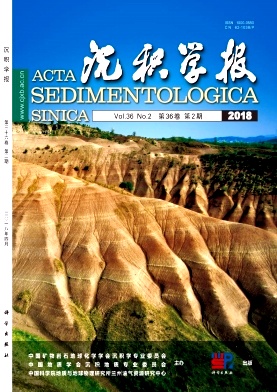Applicability of Chemical Alteration Index to Indication of Paleoclimate Change by Different Sedimentary Facies
doi: 10.14027/j.issn.1000-0550.2018.026
- Received Date: 2017-01-06
- Rev Recd Date: 2017-04-05
- Publish Date: 2018-04-10
-
Key words:
- Tumen section /
- main elements /
- CIA index /
- provenance /
- paleoclimatic change
Abstract: In the southern part of the Tengger Desert, the last glacial dissolution stratum of its Tumen profile consists of three layers of dune sand, two layers of lacustrine sediments, two layers of paleosol and five layers of sand loess. Through the chronological study of the sedimentary facies and testing of the main elements, the results define the stratum attributes to the last glacial dissolution stratum; once all the CIAs calculated, the order of CIA index appears as sand dune > loess > paleosoil > lacustrine sediments from the largest to the smallest. By contrast, it is found that the weathering intensity (climatic environment) of all the sedimentary facies indicated by CIA is in contradiction with the research conclusion that the granularity indicates the climate change in this period. With a deep study and discussion of the contradiction phenomenon, the following conclusions are obtained:1) The sedimentary material of the paleosol, lacustrine sediments and loess may originate from the Loess Plateau, on the southeast side of the soil door section. The provenance of sand dune is strongly influenced by the dune sand from the Tengger Desert in the north. The differences of the chemical elements of sedimentary facies make the comparison between the CIA index of different sedimentary facies congenitally deficient. 2) The low-lying topography where the soil door section locates at will produce water-catching effect, so that the migratory elements such as calcium, sodium, potassium and others will migrate with the precipitation of water to the surface of the sedimentary facies and the CIA indexes of different sedimentary facies are influenced to be too small to reflect the true weathering intensity. 3) The application of CIA indexes as a surrogate indicator of palaeoclimate change shall comprehensively consider the sedimentary facies provenance differences and the effect of the sedimentary environment; hence, the CIA index has limited application in indicating the paleoclimatic change.
| Citation: | ZHAO ZhanLun, WEN Xiaohao, TANG LianSheng, LI BaoSheng, NIU DongFeng, MENG Jie, YANG QingJiang. Applicability of Chemical Alteration Index to Indication of Paleoclimate Change by Different Sedimentary Facies[J]. Acta Sedimentologica Sinica, 2018, 36(2): 343-353. doi: 10.14027/j.issn.1000-0550.2018.026 |






 DownLoad:
DownLoad: